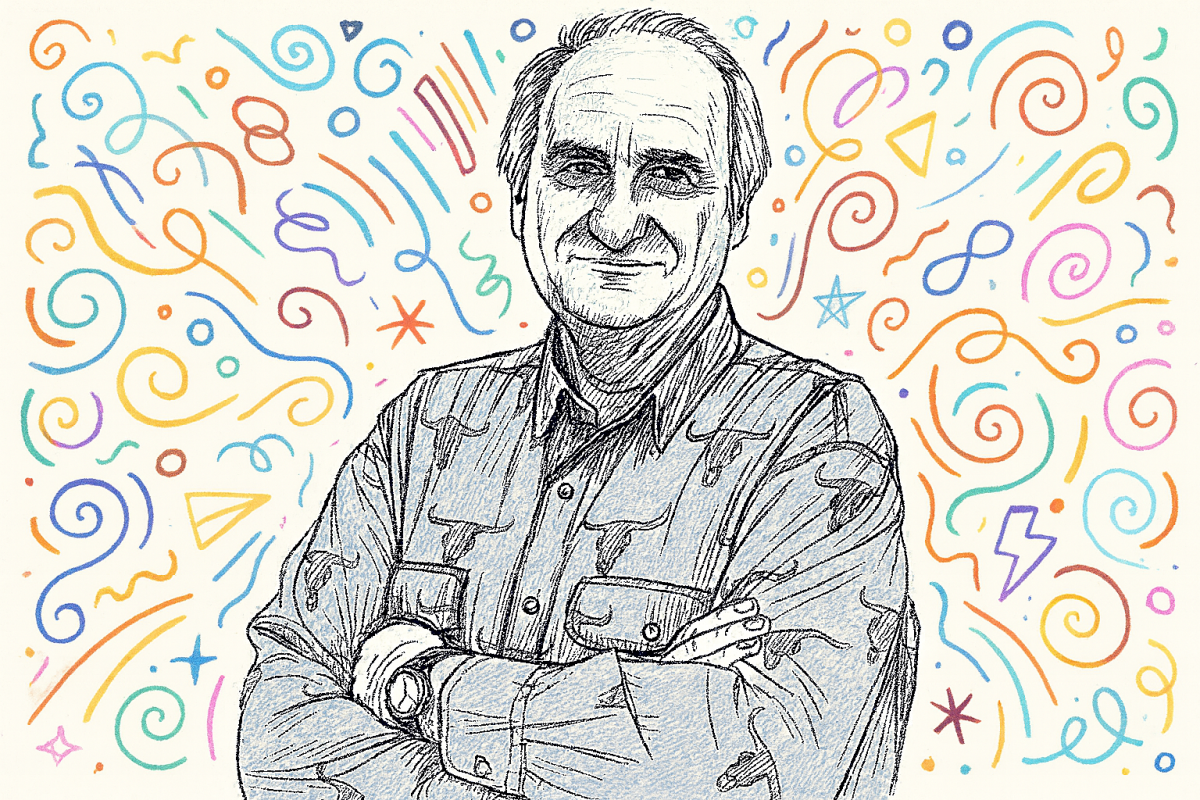Fighting the tyranny of mediocrity

The story could have ended in the evening news – because it did.
When a young Michael Conrad created an ad for a 342-year-old whiskey brand, he staged himself as a “water taster” to prove that ordinary tap water ruined fine spirits. The campaign was picked up by national television, and, as Conrad remembered, the anchor cheerfully concluded: “Isn’t it wonderful that we have people who care about our daily needs? Now, we switch to Houston for the first step on the moon.”
That mix of humor, boldness, and timing would define Conrad’s career. From his beginnings as a copywriter to his tenure as global chief creative officer at Leo Burnett, and later as co-founder of the Berlin School of Creative Leadership, Conrad built a philosophy that turned rebellion into method. His call to ESMT students was both a challenge and a conviction: to fight the tyranny of mediocrity.
Being “against something”
“To change business as usual, you must be against something,” Conrad told the audience. For him, creativity thrives in productive friction with the status quo.
At Leo Burnett, that approach produced campaigns that defied convention and delivered results. When the French liqueur Cointreau faced declining sales, Conrad and his team found that consumers found it too sweet. Their answer – Cointreau on ice, dramatized by a pair of twins symbolizing contrast and freshness – doubled sales and revitalized the brand globally.
Similarly, Braun faced a problem of success: its previous shaver was already so good that consumers saw little reason to buy a new one. Conrad turned that perception into opportunity by filming men later in the day who needed to reshave, demonstrating that the new Braun delivered a longer-lasting, superior result. The campaign’s outcome? More than one million units sold in a single year.
For Conrad, such stories were not simply advertising but demonstrations of belief.
The ten qualities of great work
Conrad believes excellence can be defined and taught. To bring consistency to creativity, he developed a system now used globally across Leo Burnett offices: the Ten Qualities of Great Work.
Four qualities to avoid
- Appalling – unethical or demeaning
- Destructive – inferior in its execution
- Non-competitive – indistinct in its category
- Clichéd – predictable or unoriginal
Three qualities to achieve through strategy
- Builds on an innovative strategy
- Expresses fresh ideas
- Is exceptionally well-crafted
Three qualities to achieve through execution
- Sets a new standard in its category
- Sets a new standard in communication
- Inspires its audience
He explained that the framework helps shift creative discussion from personal taste to quality and performance. To make that shift measurable, Conrad introduced the “7+ drive,” a global system for evaluating ideas on a ten-point scale. Work rated 7 or higher was considered excellent – distinctive, inspiring, and on strategy. In the first year, Leo Burnett agencies produced 141 pieces of 7+ work; by the fifth year, the number exceeded 350.
Over five years, 27 Leo Burnett agencies earned Agency of the Year recognition in their respective markets – the network itself was named Global Agency of the Year by Advertising Age and Most Awarded Agency in the World by The Gunn Report. Excellence, said Conrad, is measurable – not by spending, but by results that shift markets.
Meaning over metrics
Conrad’s philosophy of communication remains rooted in empathy. Early in his career, inspired by advertising greats Howard Gossage, Rosser Reeves, and David Ogilvy, he learned simple truths: “People don’t read advertising. They read what they’re interested in”; “USP”; and “Don’t count the people you reach. Reach the people who count.”
From that came his principle of psychographic targeting – reaching audiences by meaning, not demographics. He illustrated this with his “one-word brand strategy,” encouraging companies to distill their essence into a single emotional idea:
- Disney = “magic”
- Volvo = “safe”
- Dove = “real beauty”
- Apple = “the creative class”
Each word, he explained, reflects not a product but a promise – a story only creativity can tell.
The human edge
Conrad briefly reflected on artificial intelligence, acknowledging its efficiency but reminding listeners that technology cannot replace imagination. “If you can demonstrate something, demonstrate,” he repeated. “If you can tell a story, tell a story.” The creative act, he argued, remains human – rooted in empathy, storytelling, and craft.
Lessons for leaders
Conrad’s dialogue at ESMT was a masterclass in how creativity becomes strategy. His approach offers a practical guide for leaders across industries. Key takeaways:
- Challenge conformity: Innovation begins with opposition to “business as usual.”
- Define excellence: Replace opinion with shared quality standards.
- Integrate teams: Unite creative and analytical disciplines through cross-functional leadership.
- Measure meaning: Judge success by influence, not expenditure.
- Protect the human touch: Technology informs; people inspire.
As ESMT President Jörg Rocholl noted in closing, Conrad’s career demonstrates that creativity and leadership are inseparable. Conrad himself left the audience with a simple German maxim: Mut tut gut – courage is good.
This article is based on the Executive Dialogue “Fighting the tyranny of mediocrity” with Michael Conrad, held on September 26, 2025, at ESMT Berlin. The session was moderated by ESMT President Jörg Rocholl and organized in cooperation with the Marketing Club ESMT Berlin.
Interested in our events?
